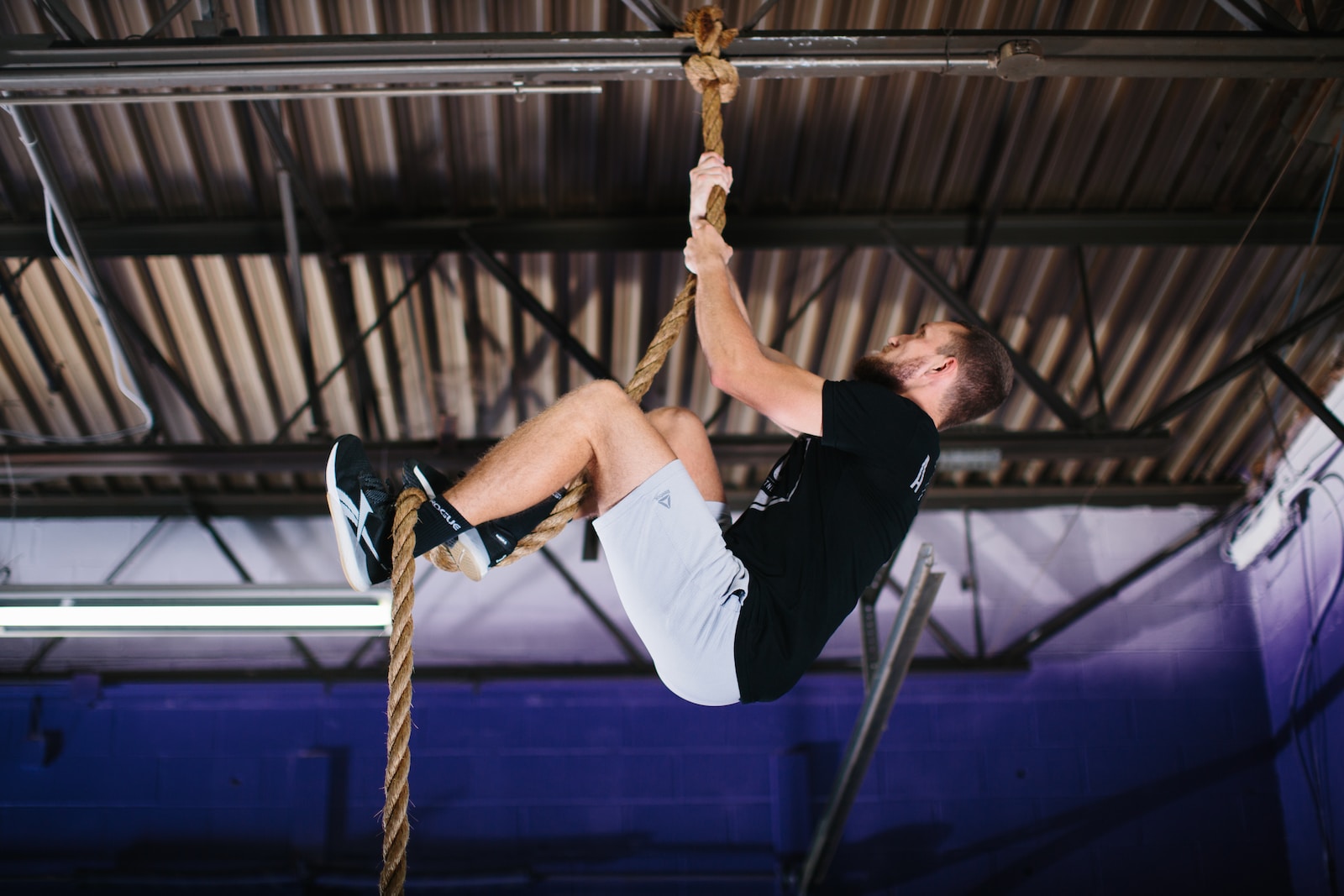In today’s fast-paced world, finding balance and tranquility is becoming increasingly challenging. The demands of work, personal responsibilities, and technology can easily overwhelm us, causing stress and anxiety. Thankfully, there is a powerful tool available to help us navigate these challenges – meditation. And now, with the advent of online meditation courses, we can learn and practice this ancient art from anywhere, at our own convenience.
Why Online Meditation Courses?
Online meditation courses offer numerous benefits that make them an attractive option for anyone seeking to learn and elevate their mindfulness practice. Here are some key advantages:
-
Flexibility and Convenience: With online meditation courses, you have the freedom to learn and practice at your own pace, fitting them into your schedule whenever it suits you. Whether you’re a busy professional or a stay-at-home parent, online courses allow you to access guided meditation sessions whenever and wherever you choose.
-
You can practice meditation at any time of the day, whether it’s early in the morning before work, during a lunch break, or in the evening to unwind before bed. Online courses eliminate the need to commute to a specific location, saving you valuable time and energy.
-
Additionally, online meditation courses provide the convenience of practicing in the comfort of your own home. You can create a dedicated meditation space that suits your preferences, ensuring a peaceful and distraction-free environment.
-
-
Access to Expert Teachers: Online meditation courses connect you with experienced meditation teachers from around the world. These seasoned practitioners share their insights and techniques, providing guidance and support throughout your meditation journey. With the click of a button, you can learn from renowned teachers who specialize in various meditation styles.
-
These expert teachers offer a wealth of knowledge and experience that can enhance your meditation practice. They can help you refine your technique, provide personalized guidance, and answer any questions you may have.
-
Furthermore, online courses often provide opportunities for one-on-one sessions with the teachers, allowing for personalized feedback and tailored instruction. This individualized attention can greatly accelerate your progress and deepen your understanding of meditation.
-
-
Wide Range of Course Options: Online platforms offer a diverse selection of meditation courses catering to different needs and preferences. Whether you’re a beginner seeking a gentle introduction or an experienced meditator looking to deepen your practice, you can easily find a course that suits your level and goals. From mindfulness-based stress reduction to loving-kindness meditation, the options are virtually limitless.
-
Online meditation courses cover a wide range of meditation techniques and styles, allowing you to explore different approaches and find the one that resonates with you the most. You can try various methods and discover what works best for your unique needs and preferences.
-
Additionally, online platforms often offer specialized courses that focus on specific aspects of mindfulness, such as managing anxiety, improving sleep, or cultivating self-compassion. These targeted courses provide in-depth knowledge and techniques to address specific challenges and goals.
-
-
Cost-Effectiveness: Compared to traditional in-person meditation classes, online courses are often more affordable, making them accessible to a wider audience. Additionally, many platforms offer free introductory courses or trial periods, allowing you to explore different styles and teachers before committing to a specific program.
-
Online courses eliminate the need for travel expenses and facility rental fees, reducing the overall cost of learning meditation. This affordability enables more people to access the benefits of meditation without financial constraints.
-
Furthermore, online courses often provide lifetime access to the course materials, allowing you to revisit the teachings and continue your practice even after completing the course. This long-term accessibility maximizes the value you receive from your investment.
-
Exploring Online Meditation Courses
When embarking on your journey to elevate mindfulness through online meditation courses, it’s important to consider a few key factors:
1. Course Content and Structure
Before enrolling in an online course, take the time to read the course description and examine the curriculum. Look for courses that align with your interests and goals. Consider whether you prefer a more structured program with a clear progression or a more flexible approach that allows you to explore different meditation styles.
- A well-structured course provides a step-by-step learning experience, building upon foundational concepts and gradually introducing more advanced techniques. This progression ensures a comprehensive understanding of meditation and allows for steady growth in your practice.
- On the other hand, a more flexible course allows you to explore different meditation styles and approaches, empowering you to customize your practice according to your preferences. This flexibility can be especially beneficial if you already have some experience with meditation and want to deepen your knowledge in specific areas.
- Look for course materials that include a balance of theoretical knowledge and practical exercises. Theoretical teachings provide a solid foundation of understanding, while practical exercises allow you to directly apply what you've learned and experience the benefits of meditation firsthand.
2. Teacher Credentials and Expertise
Check the background and experience of the meditation teachers associated with the course. Look for credentials, certifications, and years of experience in the field. Reading student testimonials or reviews can also provide insights into the teacher’s effectiveness and teaching style.
- Experienced teachers bring a wealth of knowledge, wisdom, and guidance to the online meditation course. Their expertise ensures that you receive accurate and reliable teachings, enhancing the effectiveness of your practice.
- Look for teachers who have received formal training and certifications in various meditation techniques or modalities. This demonstrates their dedication to the practice and their commitment to delivering high-quality instruction.
- Additionally, consider the teaching style of the instructor. Some teachers may have a more traditional approach, while others may incorporate modern scientific research and psychology into their teachings. Choose a teaching style that resonates with you and aligns with your learning preferences.
3. Interactive and Engaging Learning Experience
A well-designed online meditation course should offer more than just pre-recorded videos. Look for courses that provide interactive elements such as live Q&A sessions, discussion forums, or virtual group meditation sessions. These features enhance student engagement and foster a sense of community, even in an online setting.
- Live Q&A sessions allow you to directly interact with the teacher, asking questions and receiving clarifications in real-time. This interactive element promotes a deeper understanding of the teachings and provides personalized guidance tailored to your specific needs.
- Discussion forums provide a platform for students to connect with each other, share experiences, and ask questions. Engaging in discussions with fellow practitioners can expand your perspective, offer different insights, and create a supportive community of like-minded individuals.
- Virtual group meditation sessions create a sense of shared practice, even when physically separated. Meditating together with a group can deepen your connection to the practice and inspire you to maintain a consistent meditation routine.
4. Additional Resources and Support
Consider whether the course offers supplementary materials such as guided meditation recordings, reading recommendations, or access to a supportive online community. These resources can greatly enhance your learning experience and provide ongoing support as you progress in your practice.
- Guided meditation recordings provide a valuable resource for your personal practice. These recordings guide you through different meditation techniques, helping you cultivate mindfulness and deepen your experience.
- Reading recommendations introduce you to additional sources of knowledge and wisdom in the field of meditation. They allow you to explore different perspectives and deepen your understanding of the practice.
- An active and supportive online community provides a platform for connecting with fellow students, sharing insights, and receiving support. This community can be a source of inspiration, motivation, and accountability, especially during challenging times.
5. Accessibility and Technical Requirements
Ensure that the online platform and course materials are easily accessible and compatible with your devices. Check if the course can be accessed on desktop, tablets, or mobile devices, allowing you to learn and practice on the go.
- Look for a user-friendly online platform that provides a seamless learning experience. The platform should have intuitive navigation, clear instructions, and reliable technical support in case of any issues.
- Check the compatibility of the course materials with your devices and operating systems. Ensure that you can access the course content without any compatibility or technical difficulties.
The Transformative Power of Online Meditation Courses
Engaging in online meditation courses can have profound effects on your well-being and overall quality of life. Here are some ways in which it can elevate your mindfulness practice:
-
Stress Reduction: Regular meditation practice has been scientifically proven to reduce stress levels and promote relaxation. By learning and practicing meditation through online courses, you gain a valuable tool to combat daily stressors and find inner peace.
-
Through guided meditation sessions provided in online courses, you can learn techniques to calm the mind, relax the body, and release stress. These techniques help activate the relaxation response, reducing the production of stress hormones and promoting a sense of calm and well-being.
-
Online courses often include specific modules or sessions dedicated to stress reduction and managing anxiety. These modules provide practical strategies and mindfulness techniques to navigate stressful situations and cultivate resilience.
-
-
Enhanced Focus and Clarity: Meditation cultivates focus and helps declutter the mind. By dedicating time to meditation through online courses, you train your attention and improve your ability to concentrate, leading to increased productivity and mental clarity in all aspects of life.
-
Online meditation courses offer various techniques to develop concentration and focus. Techniques such as mindfulness of breath, body scan, or loving-kindness meditation can sharpen your attention and improve your ability to stay present in the moment.
-
By practicing meditation consistently, you can train your mind to let go of distractions and cultivate a state of heightened focus. This enhanced focus can have a positive impact on your work, relationships, and overall cognitive abilities.
-
-
Emotional Well-being: Online meditation courses often include techniques for cultivating compassion, gratitude, and emotional resilience. Through regular practice, you can develop a greater sense of self-awareness, emotional balance, and the ability to respond to challenging situations with equanimity.
-
Meditation techniques such as loving-kindness meditation or compassion meditation can help cultivate positive emotions and strengthen your capacity for empathy and compassion towards yourself and others.
-
Online courses may also incorporate mindfulness practices that enhance emotional regulation and resilience. These practices provide tools to navigate difficult emotions, manage stress, and cultivate a sense of inner peace.
-
-
Improved Physical Health: Meditation has been linked to various physical health benefits, including lowered blood pressure, improved sleep quality, and enhanced immune function. Engaging in online courses allows you to tap into these potential health benefits from the comfort of your own home.
-
Online meditation courses often include modules or sessions specifically designed to promote physical well-being. These sessions may focus on body awareness, mindful movement, or relaxation techniques that support optimal health.
-
By reducing stress and promoting relaxation, meditation can positively impact various aspects of physical health. It can improve sleep quality, boost the immune system, lower blood pressure, and even alleviate chronic pain.
-
-
Connection and Community: Despite being an individual practice, online meditation courses provide opportunities to connect with like-minded individuals from around the world. Engaging in discussions, sharing experiences, and participating in virtual group meditations can foster a sense of belonging and support on your mindfulness journey.
-
Many online courses offer discussion forums or online communities where students can interact with each other and the teachers. These platforms create a sense of community and provide a space for sharing insights, asking questions, and receiving support.
-
Virtual group meditations allow you to meditate together with fellow students, even if you are physically apart. This shared experience can deepen your practice, create a sense of connection, and inspire you to maintain a consistent meditation routine.
-
Conclusion
Online meditation courses offer a convenient and accessible way to learn and practice meditation from anywhere in the world. With expert teachers, diverse course options, and transformative benefits, these courses bring the power of mindfulness directly into your life. Embrace the opportunity to elevate your mindfulness practice and experience the profound positive impact of online meditation courses.
FAQ
1. What are the advantages of online meditation courses?
Online meditation courses offer flexibility and convenience, access to expert teachers, a wide range of course options, and cost-effectiveness.
2. How can I choose the right online meditation course?
Consider the course content and structure, teacher credentials and expertise, interactive and engaging learning experience, additional resources and support, and accessibility and technical requirements.
3. What are the benefits of engaging in online meditation courses?
Engaging in online meditation courses can reduce stress, enhance focus and clarity, improve emotional well-being, promote physical health, and provide a sense of connection and community.
4. How can online meditation courses improve my mindfulness practice?
Online meditation courses can provide techniques to reduce stress, enhance focus, cultivate positive emotions, improve physical health, and connect with like-minded individuals to support your mindfulness journey.




